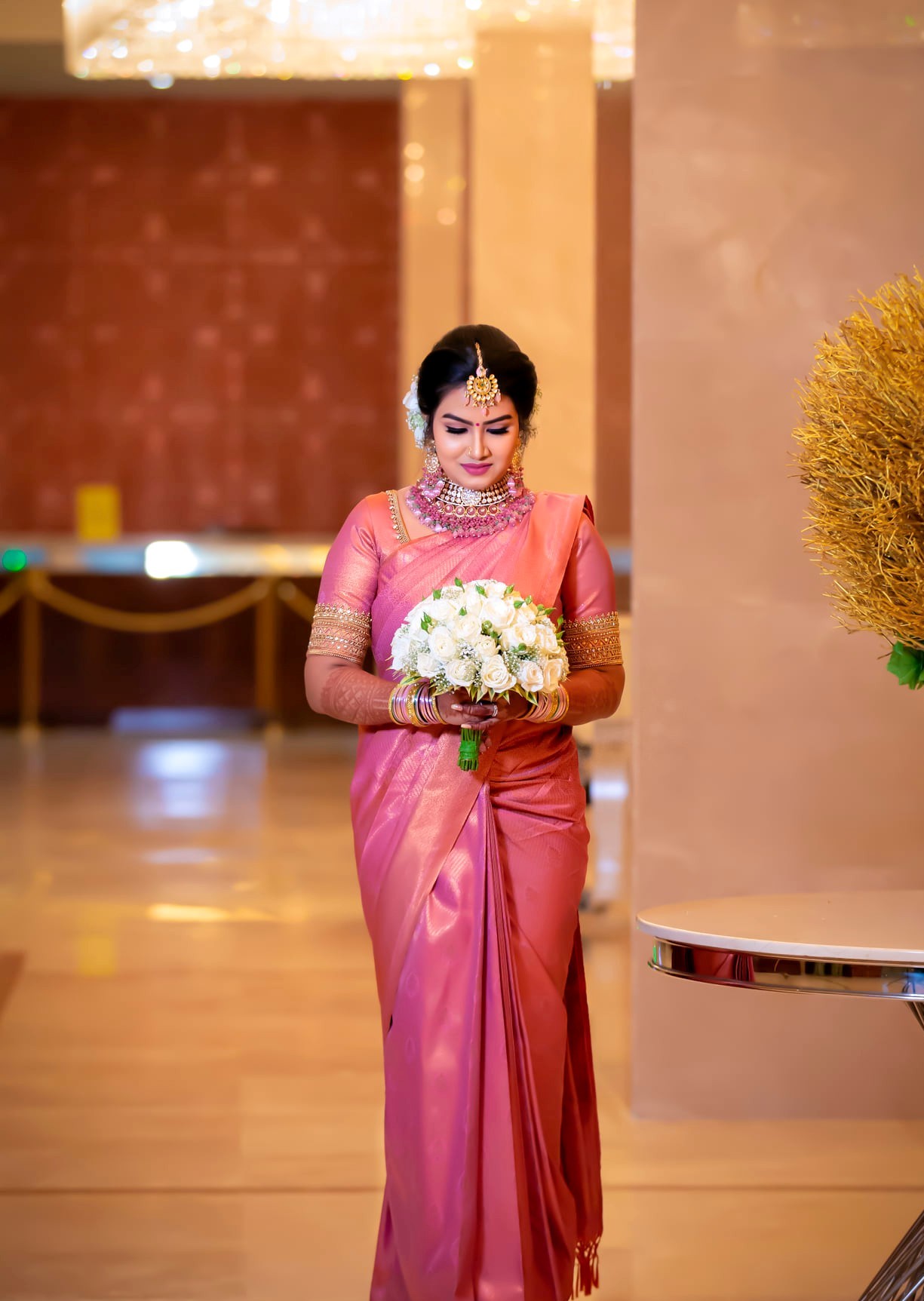Kerala’s Hindu wedding tradition is an important event that brings people together. It’s a stunning ceremony known for its traditions and rituals; here are some of the more notable ones you should be aware of when attending a Hindu wedding in Kerala.

There are many interesting Malayali Hindu Wedding Traditions and Rituals. The state of Kerala is known for its diverse culture and traditions that make each wedding unique.
Aashirwadam (Pre-Nuptial Blessing):
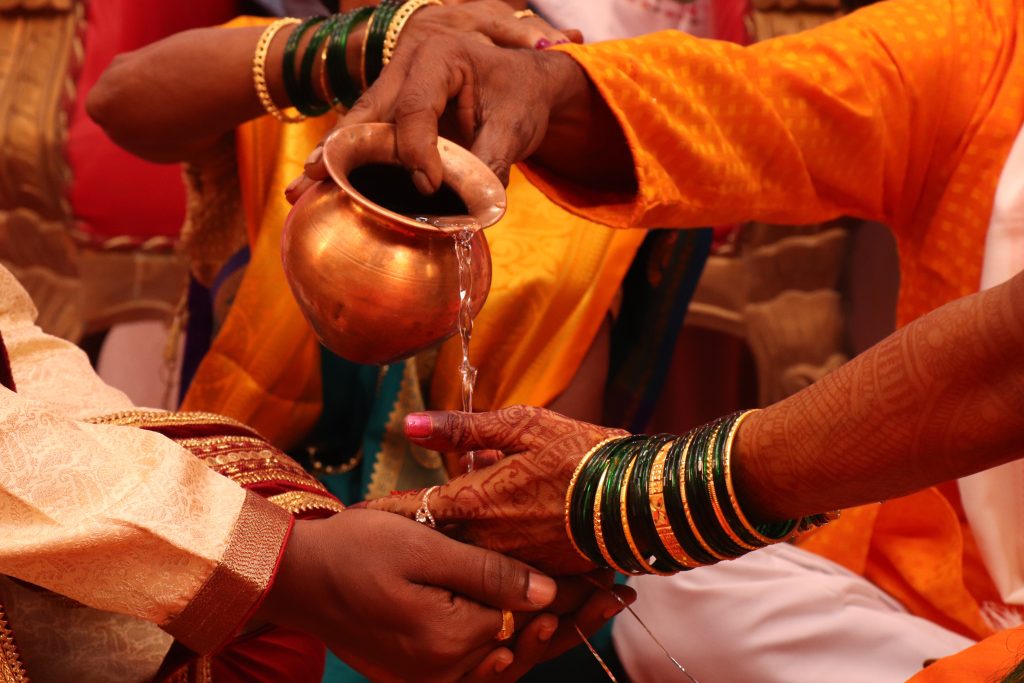
An ancient wedding tradition, Aashirwadam is a ceremony in which the bride and groom seek blessings from their elders before entering the mandapam to tie the knot. This custom has been passed down through generations and signifies both parties’ acceptance of one another.
Kanyadanam:
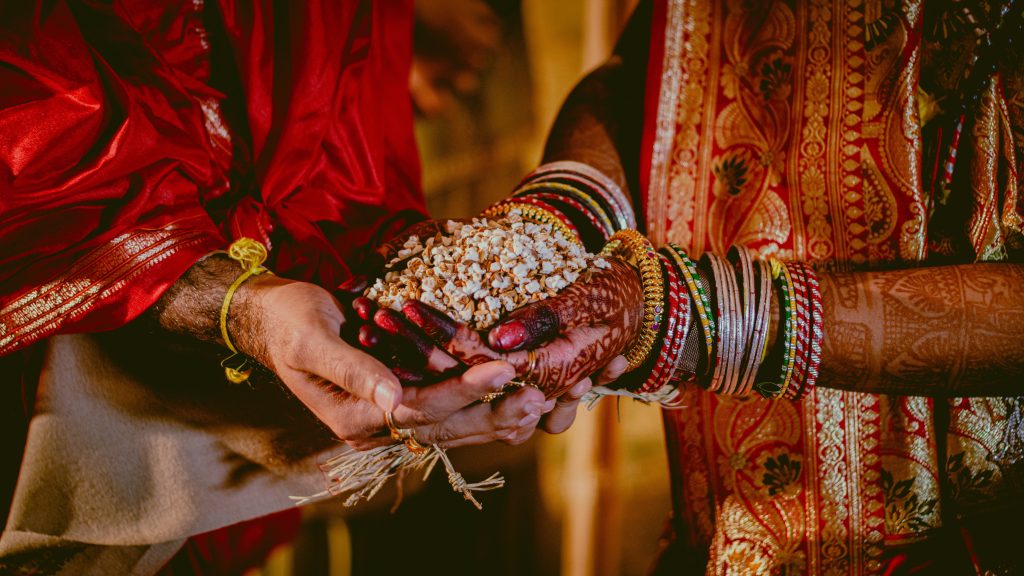
This wedding rite in Kerala takes place with the bride’s parents and friends present. The parents place their daughter’s right hand into that of the groom to express their consent for marriage, then pray to God to shower Him with His richest blessings upon them both.
Mehendi:
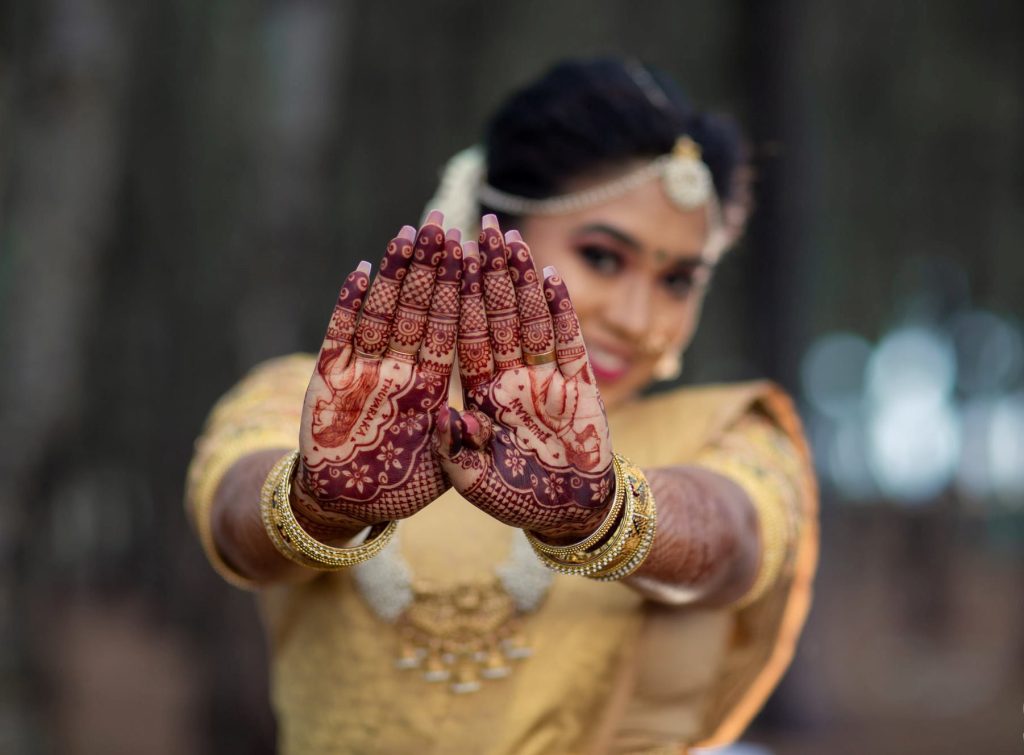
Mehendi is an elegant and essential wedding ritual where Henna art is applied to the bride’s hands. This popular event often has accompanying music and dance performances.
Kasavu – Kerala brides traditionally wear this unique wedding attire: a white saree with a gold border accented with gold jewellery. This tradition has been passed down from generation to generation and now forms part of the bride’s traditional clothing.
Pudamuri:
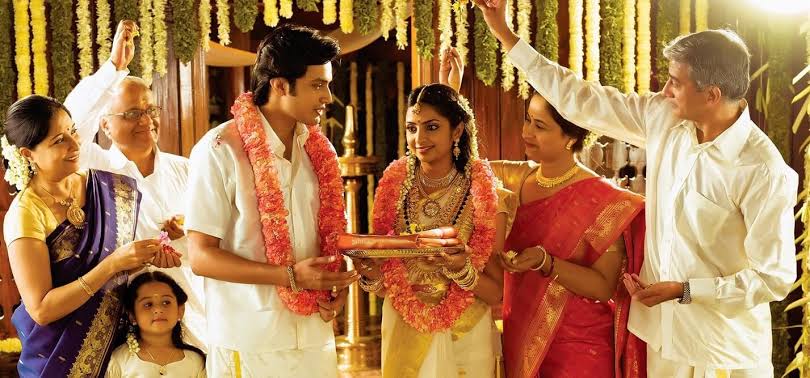
Another important wedding ritual in Kerala is when the groom presents his bride with a stunning silk saree and blouse on an elegant platter. It is an expression of his affection and commitment to her.
Dakshina Kodukkal:
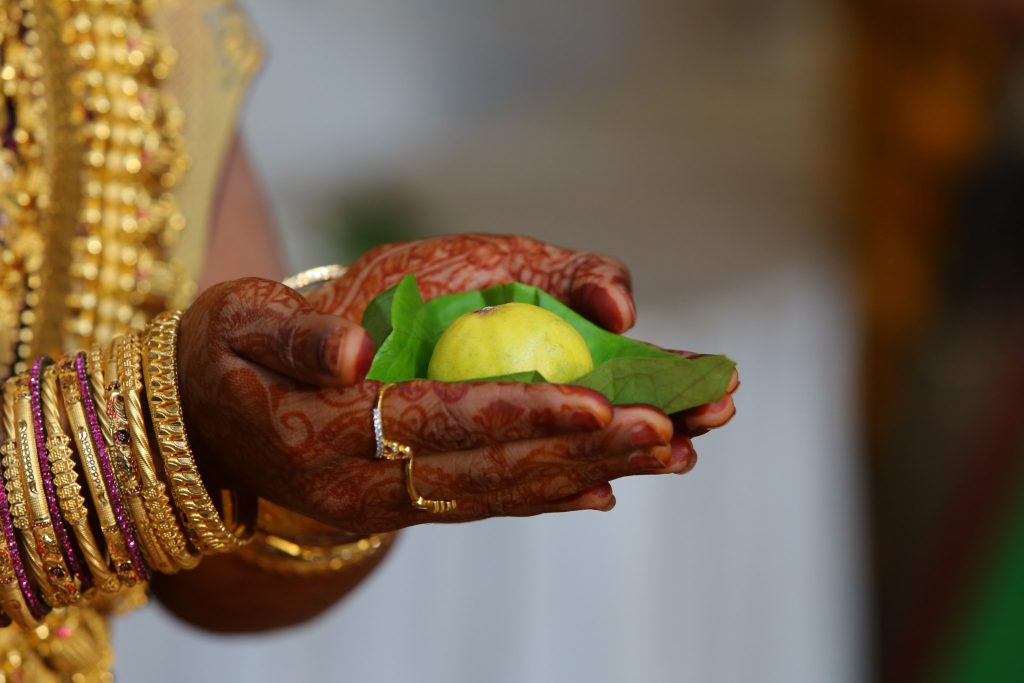
Before the main ceremony, couples perform this wedding rite to seek blessings from their elders at their homes. It has been passed down through generations as an endearing and warm ritual.
Grihapravesham:
After the wedding, the groom and his family welcome his new wife to their family home for the first time. Through an emotional kudiveppu ceremony, they offer her a warm welcome that will remain with her forever.
After the kudiveppu, her in-laws shower her with gifts – jewels and clothes. The house is lit with lamps as the woman walks in with her right foot planted first – this symbolizes that she is entering the home feel at ease.
Kudivep is an emotional moment for the bride and her parents as she enters her new house for the first time after marriage. Her in-laws showered her with gifts and jewellery that she will treasure throughout her life.
Sadhya:
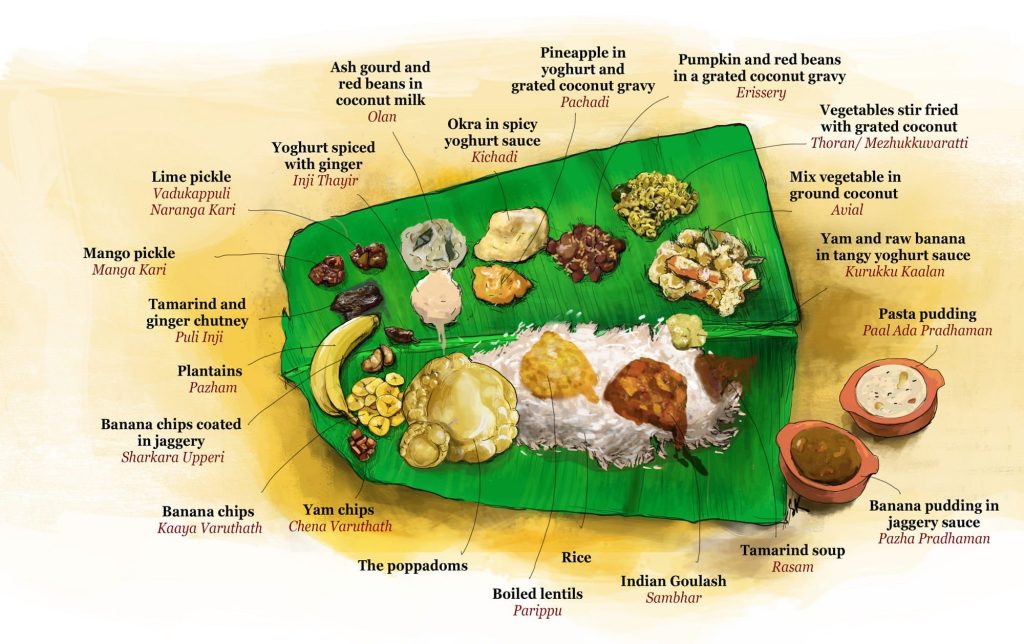
After the wedding ceremony, guests are treated to an indulgent feast called ‘Sadhya’. This traditional feast contains 25 vegetarian items and is the perfect way to cap off the celebrations and mark the start of a new family.
Home Coming: Griha Pravesham
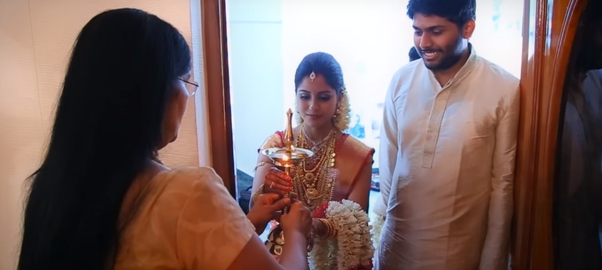
After the wedding, the bride leaves her parent’s house for the groom’s home in a car with her mother and sister. This is a very emotional moment for the bride as she breaks ties with her family and moves on to a new family.
The couple is welcomed at the bride’s home by her mother and sister with a ritual called Griha Pravesham, an essential part of Hindu marriage ceremonies. It symbolizes a happy new chapter for the bride as she walks into her new home carrying a lamp in her right hand.
